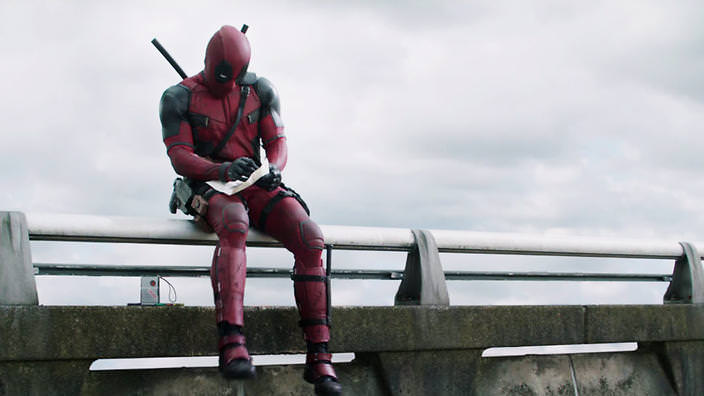Deadpool: How Marvel’s Biggest Misfit Fits In and Acts Out
Before the MCU (that is, the Marvel Cinematic Universe) was ubiquitous, the X-Men dominated film’s superhero landscape and for much of the early aughts, the X-Men series stood as a popular representation of Marvel Comics’ cinematic potential. But in 2008, the official MCU commenced with Iron Man, leaving Spider-Man under the control of Sony, and X-Men, (not to mention Deadpool and Gambit) under the control of 20th Century Fox.
And while what X-Men producer Simon Kinberg terms the “Fox/Marvel Universe” doesn’t look to be joining the MCU’s sprawling reach right away, their previously contested continuity is currently being handily grounded thanks to a certain motor-mouthed mercenary. The long-awaited Deadpool, which is set to hit theaters this Friday, is nearly unrecognizable as a Marvel property due to its explosive violence and twisted moral sensibilities, but remains sly enough to recognize its own pop culture lineage, leaving the door wide open for future crossovers while formulating a canonical anti-hero in his own right.
Based on Marvel Comics’ favorite meta rascal, Deadpool offers a snarky origin story with more than a few winking references to the massive and imposing scale of the MCU. Deadpool follows Ryan Reynold’s caustic Wade Wilson, an unhinged but largely successful mercenary with a penchant for chaos and cash, as the film charts his course from mischievous bar brawler to the most vaguely heroic oddball to enter the MCU, Fox or otherwise.
Though "Deadpool"’s comic origin reaches farther back than the scope of the film, Tim Miller’s Deadpool picks up with the adult delinquent as he is diagnosed with late stage cancer, threatening to tear he and his loving girlfriend apart. It’s not long before Wade is targeted by a shadowy agency offering to cure him of the disease, but the cure comes at the cost of his handsome exterior and mistreatment at the hands of a man known as Ajax. After undergoing countless tests and torturous experiments, Wade is eventually horribly disfigured by the activation of his latent mutant DNA, which allows him to heal and regenerate at alarming speeds. For those who want to go into the film knowing as little as possible, read no further.

Ryan Reynolds is 'Deadpool.' Courtesy 20th Century Fox
We first meet the mutant merc in media res, as Deadpool gleefully whacks off heads with his pair of katanas and flings bodies into the air with ease. And while humor in the MCU might be often relegated to quippy banter between Bruce Banner and Tony Stark sure to set the internet ablaze, Deadpool’s sense of humor is a little (read: a lot) darker. Casually recommending murder to his cab driver as a quick fix for the troubles in his love life, emptying the barrel of his gun into his enemies as a test of his own marksmanship and threatening to pleasure himself in front of his blind landlady come together to form what might be a typical Monday for the unhinged mercenary.
Despite his bluster, it isn’t long before Deadpool turns to Xavier’s School for Gifted Youngsters (the central home for the mutants in the X-Men series) for help defeating Ajax, the man who destroyed his face. But rather than find a familiar mutant at the door, his knock turns up Negasonic Teenage Warhead, a lesser-known teenage mutant as powerful as her title intimates, and Colossus, a noble and indestructible muscle-bound hero with a metal exterior.
But this is no Avengers. Deadpool spends much of his time relentlessly ribbing his newfound partners: mocking Negasonic Teenage Warhead’s sullenness and Colossus’ infallible sense of honor; and when he tires of that, drawing attention to the scale of the motion picture he’s starring in. In one such scene, Deadpool muses aloud that the absence of Wolverine, Mystique and the rest of the X-Men gang from the film is due to the studio’s refusal to pour more cash into the project. Regularly acknowledging Reynold’s previous appearances in X-Men Origins: Wolverine and Green Lantern, Deadpool breaks the fourth wall once and then twice, “that’s like, 16 walls,” he mugs to the camera, with enough bald-faced confidence to make his status as newly minted Marvel hero feel strangely fitting.
In case there was any concern about Deadpool squandering its much-hyped R rating, you can rest easy. The film, which features plenty of bloodshed, relishes in the impact of Deadpool’s frequent acts of violence, something that feels particularly revolutionary when compared with the rest of the MCU’s bloodless PG-13 offerings. In one of the most indulgently violent sequences of the film, Deadpool takes on Colossus in hand-to-hand combat, slowly reducing one limb after another to human jelly as his bones are met with the mutant’s metal resistance.
But for all of the meta pushback, Simon Kinberg, producer of the X-Men franchise along with Deadpool and the upcoming Gambit, has explained that Deadpool fits into the plan for the Fox/Marvel Universe, existing in a post-Days of Future Past, post-Apocalypse world. “All of these stories are the same as our shared history,” Kinberg elaborated. “The same way that each of us, of different ages, knows about Nixon and knows about Reagan and knows about 9/11. Our fictitious events like the stadium dropping on the White House in 1973 is part of the world in which Gambit, Deadpool, everybody, Wolverine on forward exist.” Considering the recent Sony shakeup that’s resulted in a new Spider-Man reboot and the Scarlet Witch’s appearances in Avengers: Age of Ultron, it’s fair to say any crossover might be possible, but regardless of how many heroes he encounters, it’s hard to imagine Deadpool playing nicely with others.


